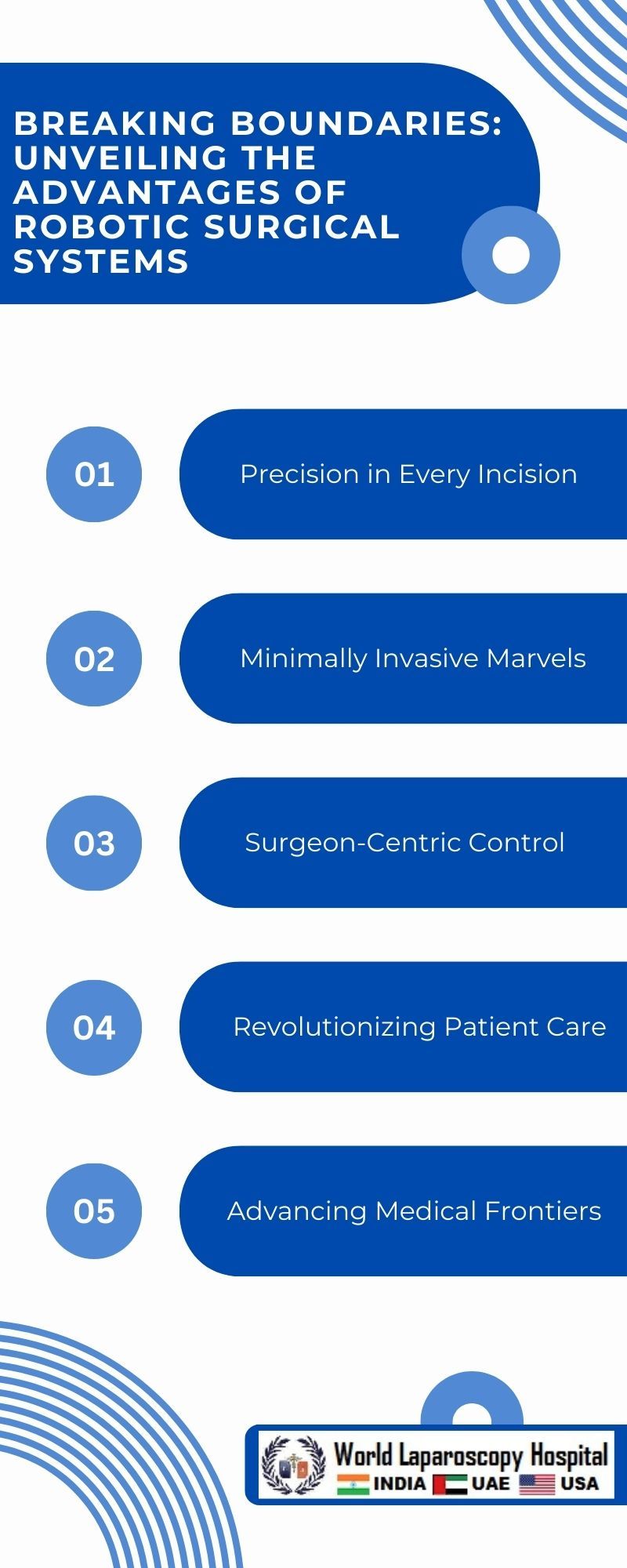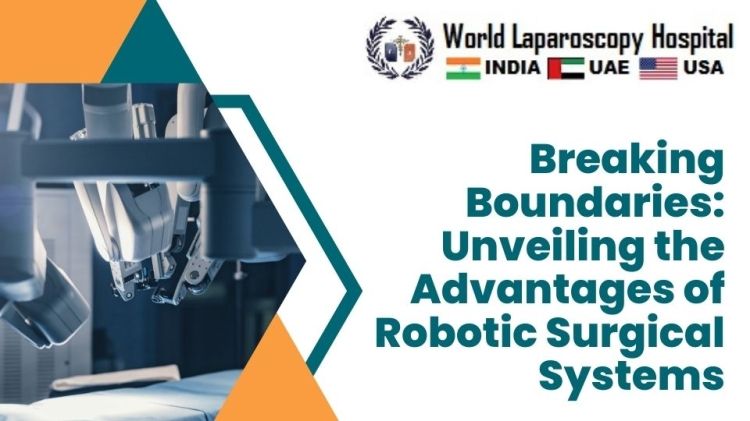Breaking Boundaries: Unveiling the Advantages of Robotic Surgical Systems
Introduction
In the realm of modern medicine, technology continually pushes the boundaries of what was once thought possible. Among the many innovations, robotic surgical systems stand out as a remarkable advancement that has revolutionized the field of surgery. With their precision, dexterity, and advanced imaging capabilities, these systems are transforming how surgeries are performed, offering numerous advantages over traditional methods. This article delves deep into the world of robotic surgery, exploring its benefits, challenges, and the promising future it holds for healthcare.

The Evolution of Robotic Surgery
The concept of robotic surgery dates back to the 1980s when the first robotic systems were developed for use in surgical procedures. These early prototypes laid the groundwork for what would later become sophisticated robotic surgical platforms. The da Vinci Surgical System, introduced in the late 1990s, marked a significant milestone in the evolution of robotic surgery. Developed by Intuitive Surgical, this system became the gold standard for robotic-assisted surgery and paved the way for subsequent advancements in the field.
How Robotic Surgical Systems Work
Robotic surgical systems consist of several components working together to enable precise and minimally invasive procedures. At the core of these systems is a surgical console, where the surgeon sits and controls the robotic arms equipped with surgical instruments. The console provides a magnified, high-definition view of the surgical site, allowing the surgeon to perform intricate movements with unparalleled accuracy. The robotic arms mimic the surgeon's hand movements, translating them into precise actions inside the patient's body. Additionally, advanced imaging technologies, such as 3D visualization and fluorescence imaging, enhance the surgeon's ability to navigate complex anatomy and identify critical structures.
Advantages of Robotic Surgery
Robotic surgical systems offer numerous advantages over traditional open and laparoscopic techniques. One of the most significant benefits is enhanced precision. The robotic arms can make movements with greater accuracy and stability than the human hand, reducing the risk of errors during surgery. This precision is particularly valuable in delicate procedures such as neurosurgery and cardiac surgery, where millimeter-level accuracy is crucial for patient outcomes.
Moreover, robotic surgery enables surgeons to perform procedures with increased dexterity. The robotic instruments have a greater range of motion than traditional surgical tools, allowing for more precise maneuvers in tight spaces. This enhanced dexterity is especially beneficial in procedures requiring intricate suturing or dissection, such as prostatectomy and hysterectomy.
In addition to precision and dexterity, robotic surgery offers patients several advantages, including shorter hospital stays, reduced pain and scarring, and faster recovery times. The minimally invasive nature of robotic procedures results in smaller incisions, leading to less trauma to surrounding tissues and a quicker return to normal activities for patients.
Challenges and Limitations
Despite its many advantages, robotic surgery also faces challenges and limitations that must be addressed. One such challenge is the high cost associated with acquiring and maintaining robotic surgical systems. The initial investment in purchasing the equipment, as well as ongoing expenses for maintenance and training, can be prohibitive for some healthcare institutions. This cost barrier limits access to robotic surgery in certain regions and healthcare settings, raising concerns about equity and affordability in healthcare.
Another challenge is the learning curve associated with mastering robotic surgical techniques. While robotic systems offer advanced capabilities, they require specialized training for surgeons and operating room staff. Learning to navigate the console and manipulate the robotic arms effectively can take time, and not all surgeons may have access to adequate training opportunities. As a result, there is a need for standardized training programs and certification processes to ensure the safe and proficient use of robotic surgical systems.
Furthermore, robotic surgery may not be suitable for every patient or procedure. Certain factors, such as anatomical variations or the complexity of the surgery, may influence the feasibility of using robotic-assisted techniques. Additionally, there are limitations to the types of procedures that can be performed robotically, as some surgeries may require open or hybrid approaches for optimal outcomes.
Future Directions in Robotic Surgery
Despite the challenges, the future of robotic surgery looks promising, with ongoing advancements and innovations driving its evolution. Researchers and engineers continue to explore new technologies to enhance the capabilities of robotic surgical systems, such as artificial intelligence, augmented reality, and haptic feedback. These developments aim to further improve surgical outcomes, increase efficiency, and expand the range of procedures that can be performed robotically.
Moreover, efforts are underway to address the cost barriers associated with robotic surgery and improve access to this technology for patients worldwide. Collaborative initiatives between healthcare institutions, industry partners, and regulatory agencies are seeking to make robotic surgical systems more affordable and accessible, particularly in underserved communities.
Conclusion
Robotic surgical systems have emerged as a transformative force in modern healthcare, offering unprecedented precision, dexterity, and patient benefits. Despite facing challenges such as cost and training requirements, robotic surgery continues to evolve and expand its reach, with ongoing advancements driving innovation in the field. As technology continues to push the boundaries of what is possible, the future of robotic surgery holds immense promise for improving patient care and shaping the future of surgery.
